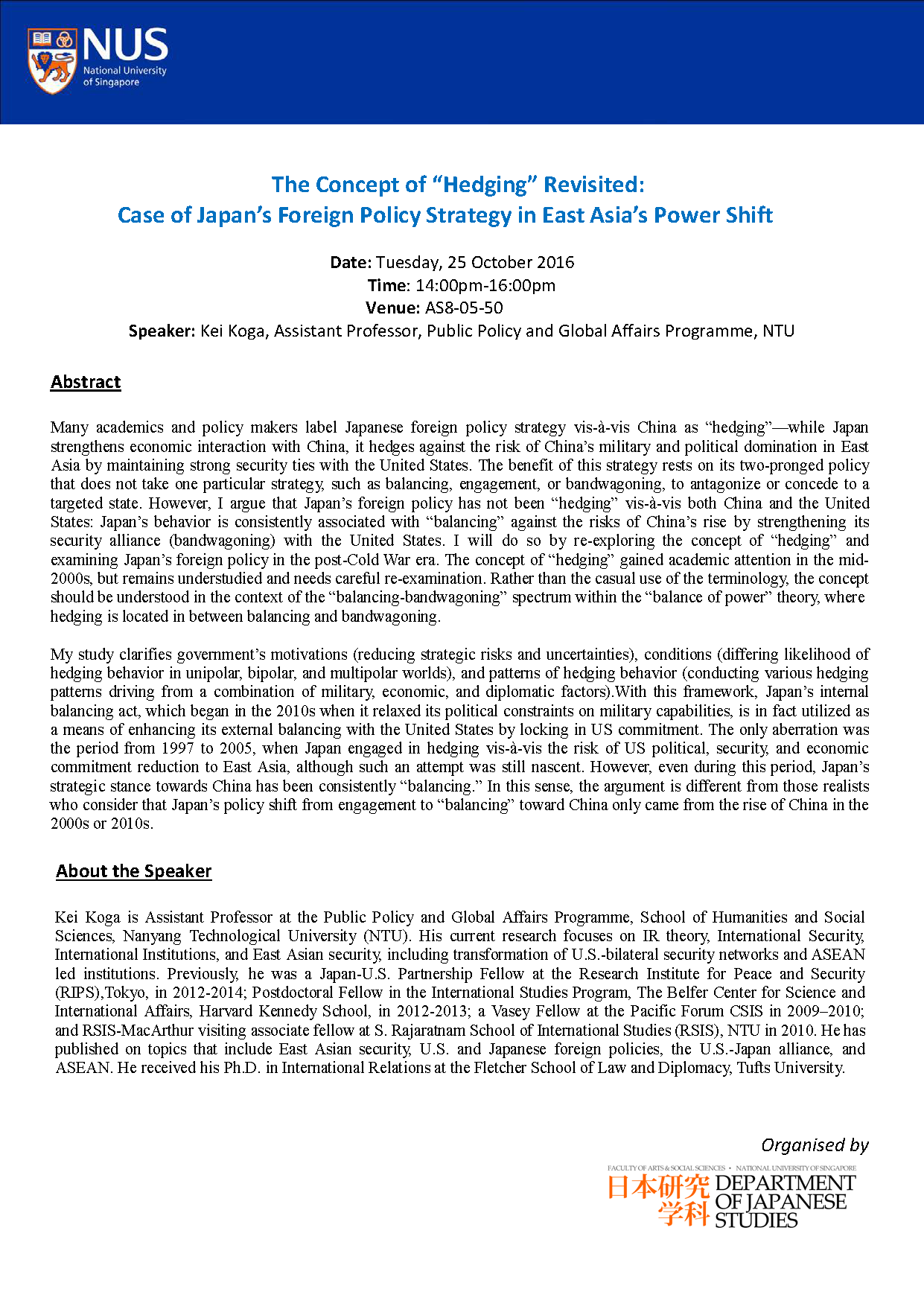The Concept of “Hedging” Revisited: Case of Japan’s Foreign Policy Strategy in East Asia’s Power Shift
Abstract
Many academics and policy makers label Japanese foreign policy strategy vis-à-vis China as “hedging”—while Japan strengthens economic interaction with China, it hedges against the risk of China’s military and political domination in East Asia by maintaining strong security ties with the United States. The benefit of this strategy rests on its two-pronged policy that does not take one particular strategy, such as balancing, engagement, or bandwagoning, to antagonize or concede to a targeted state. However, I argue that Japan’s foreign policy has not been “hedging” vis-à-vis both China and the United States: Japan’s behavior is consistently associated with “balancing” against the risks of China’s rise by strengthening its security alliance (bandwagoning) with the United States. I will do so by re-exploring the concept of “hedging” and examining Japan’s foreign policy in the post-Cold War era. The concept of “hedging” gained academic attention in the mid2000s, but remains understudied and needs careful re-examination. Rather than the casual use of the terminology, the concept should be understood in the context of the “balancing-bandwagoning” spectrum within the “balance of power” theory, where hedging is located in between balancing and bandwagoning.
My study clarifies government’s motivations (reducing strategic risks and uncertainties), conditions (differing likelihood of hedging behavior in unipolar, bipolar, and multipolar worlds), and patterns of hedging behavior (conducting various hedging patterns driving from a combination of military, economic, and diplomatic factors).With this framework, Japan’s internal balancing act, which began in the 2010s when it relaxed its political constraints on military capabilities, is in fact utilized as a means of enhancing its external balancing with the United States by locking in US commitment. The only aberration was the period from 1997 to 2005, when Japan engaged in hedging vis-à-vis the risk of US political, security, and economic commitment reduction to East Asia, although such an attempt was still nascent. However, even during this period, Japan’s strategic stance towards China has been consistently “balancing.” In this sense, the argument is different from those realists who consider that Japan’s policy shift from engagement to “balancing” toward China only came from the rise of China in the 2000s or 2010s.
About the Speaker
Kei Koga is Assistant Professor at the Public Policy and Global Affairs Programme, School of Humanities and Social Sciences, Nanyang Technological University (NTU). His current research focuses on IR theory, International Security, International Institutions, and East Asian security, including transformation of U.S.-bilateral security networks and ASEAN led institutions. Previously, he was a Japan-U.S. Partnership Fellow at the Research Institute for Peace and Security (RIPS),Tokyo, in 2012-2014; Postdoctoral Fellow in the International Studies Program, The Belfer Center for Science and International Affairs, Harvard Kennedy School, in 2012-2013; a Vasey Fellow at the Pacific Forum CSIS in 2009–2010; and RSIS-MacArthur visiting associate fellow at S. Rajaratnam School of International Studies (RSIS), NTU in 2010. He has published on topics that include East Asian security, U.S. and Japanese foreign policies, the U.S.-Japan alliance, and ASEAN. He received his Ph.D. in International Relations at the Fletcher School of Law and Diplomacy, Tufts University.


